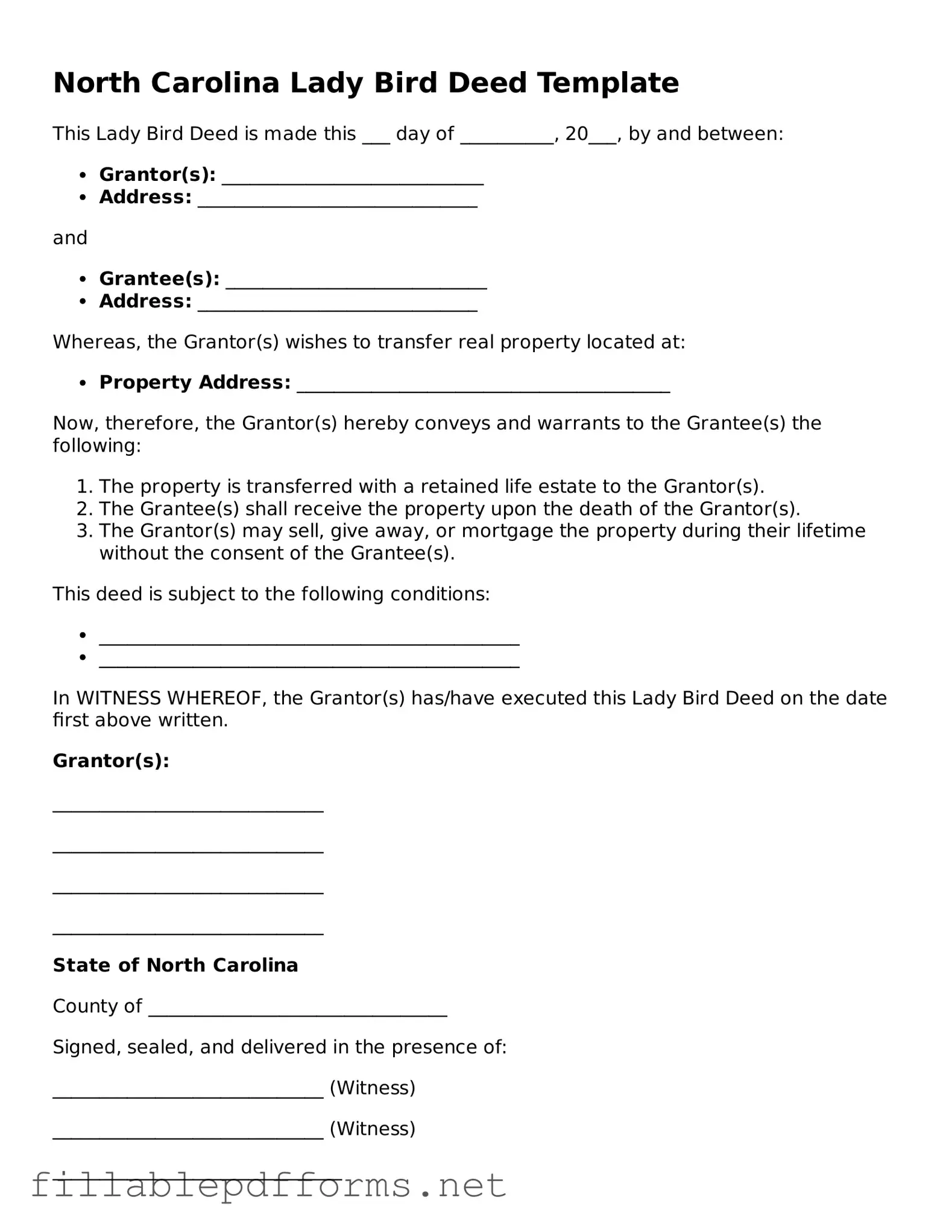Attorney-Verified Lady Bird Deed Form for North Carolina State
The North Carolina Lady Bird Deed form is a legal document that allows property owners to transfer their real estate to beneficiaries while retaining certain rights during their lifetime. This unique form of deed provides flexibility and control, ensuring that property can bypass the probate process upon the owner's death. Understanding its implications can empower individuals to make informed decisions about their estate planning.
Launch Editor Here
